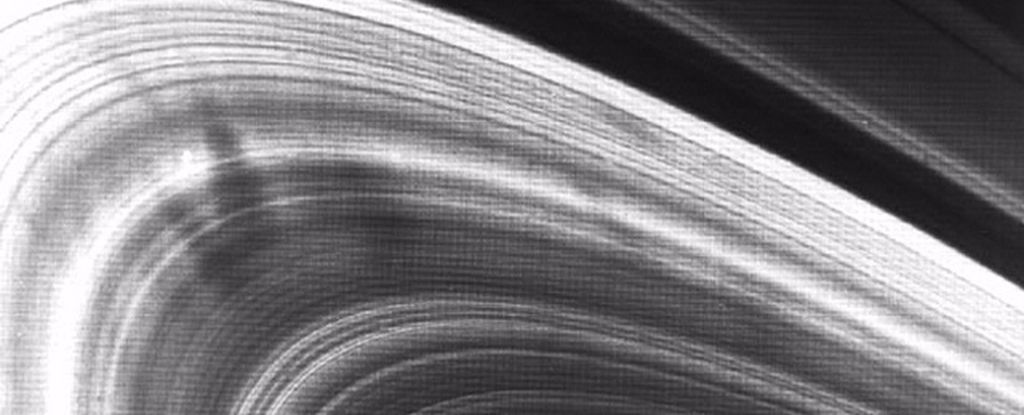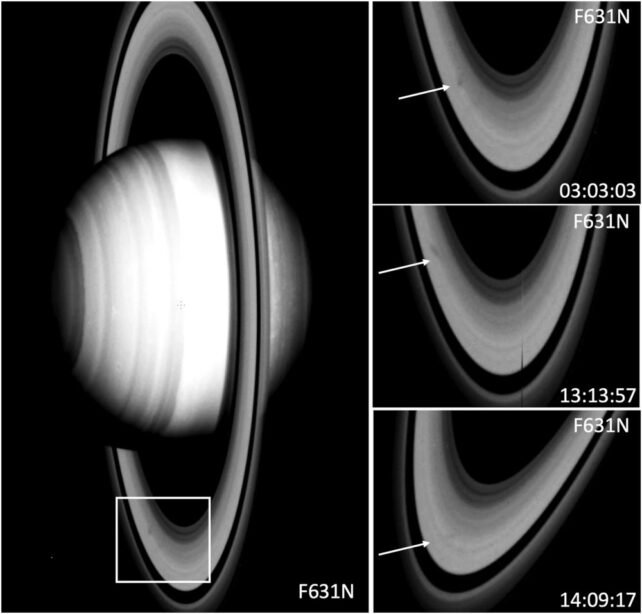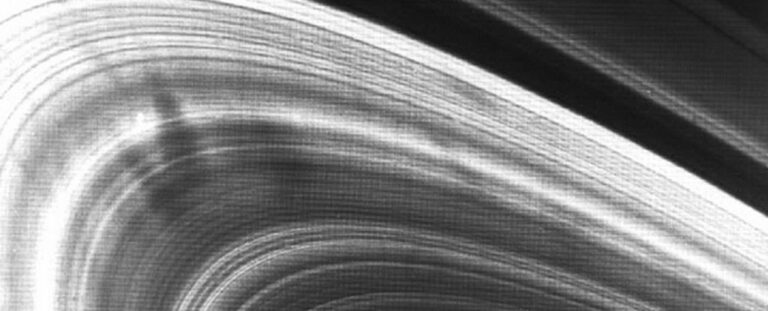The cause of mysterious smudges on Saturn’s rings is currently unknown.
This article discusses the strange radial smudge marks, known as “spokes,” that appear on Saturn’s rings seasonally and their unknown cause. It explores various scientific theories and ongoing research efforts to unravel this mystery.

A new “spoke season” has been confirmed to be starting at Saturn by the Hubble Space Telescope. These spoke seasons occur during specific periods of the Saturnian year, typically around the equinoxes, and are characterized by the emergence of enigmatic radial marks resembling wheel spokes that stretch across the planet’s rings.
Although the cause of the spokes on Saturn’s rings is not yet understood, their reappearance offers scientists a chance to study them in greater detail, aided by the Hubble planetary observing program. The spokes only emerge seasonally, and their disappearance and reappearance at specific times during Saturn’s year remain a mystery that researchers hope to solve.
According to NASA planetary scientist Amy Simon, Hubble’s OPAL program, which is creating an archive of data on outer solar system planets, will provide a longer dedicated time to investigate Saturn’s spokes this season than ever before.
The spoke phenomenon was first detected in images taken by the two Voyager probes during their respective flybys of Saturn in 1980 and 1981. The spokes manifest as temporary streaks and smudges that often appear as radial features that move along with the rings’ orbit around Saturn.
Upon further observation and analysis, researchers have discovered additional peculiarities surrounding the spokes. While the spokes typically appear dark when viewed from above, they appear bright when viewed from below, and they are not always present.
These enigmatic radial marks usually appear twice during Saturn’s year – in spring and autumn, around the eight-year period centered around the equinox, and disappear during summer and winter, in the period centered around the solstice.
Saturn and Earth are distinct in many ways, but they share one similarity: both have a significant axial tilt in relation to their orbital plane. Earth’s tilt is 23.45 degrees, while Saturn’s is 26.73 degrees. This tilt is responsible for the seasons experienced on Earth. As Earth revolves around the Sun, the amount of sunlight received by the Northern and Southern hemispheres varies, depending on whether they are inclined towards or away from the Sun.
The solstice, which occurs during summer and winter, marks the point at which the axial tilt is at its maximum. The equinox, occurring in spring and autumn, is the time of lowest tilt in relation to the Sun. Similar to Earth, Saturn experiences these events, but its possession of rings adds another layer of complexity. The tilt of Saturn’s rings inclines toward the Sun during the solstices, while the rings are nearly edge-on during the equinoxes.
Because Saturn is considerably farther from the Sun, its orbit takes longer. Its year is 29 Earth years, and each season lasts approximately seven years.
Observations conducted over several decades have shown that the spokes typically begin to appear around four years before the equinox. The next Saturnian equinox is slated to occur in 2025, and the onset of the “spoke season” was expected to happen sometime in 2021.
As per Simon’s explanation, despite the exceptional observations made during the Cassini mission, the exact start and duration of the spoke season remains unpredictable, similar to predicting the onset of the first storm in a hurricane season.
To detect signs of the spokes, Simon’s team leveraged Hubble’s Outer Planet Atmospheres Legacy (OPAL) program, which has been conducting an observing campaign of the outer Solar System planets. The team analyzed Hubble observations from 2021 and 2022 and found that the spokes appeared right on schedule in 2021.

In September 2022, Simon’s team tracked the spokes for 11 hours in the data, confirming that the spoke season is well underway.
Scientists have proposed some ideas about what causes the spokes. Data from previous missions, including Voyager, suggest that the spokes are made up of dust particles that separate from the icy chunks in the rings and levitate separately. It is possible that Saturn’s magnetic field causes this phenomenon.
Saturn’s magnetic field creates an electrically charged environment when it interacts with the solar wind, which could be influencing charged dust particles in the rings, causing them to stick together electrostatically and temporarily form denser dust patches in the rings.
However, it is unclear if this is indeed the reason behind the spokes or why they are seasonal. Over the next few years, Hubble data could help scientists to solve the mystery.
According to the researchers, “The Hubble OPAL program will continue its annual Saturn observational cadence for as long as the facility is operational, and the spokes should soon be readily visible to ground-based telescopes, as well.”
Their findings have been published in Geophysical Research Letters.
Do not forget to share your opinion with us to provide you with the best posts !




It is in point of fact a nice and helpful piece of info. I’m happy
that you simply shared this helpful information with us.
Please stay us up to date like this. Thanks for sharing.